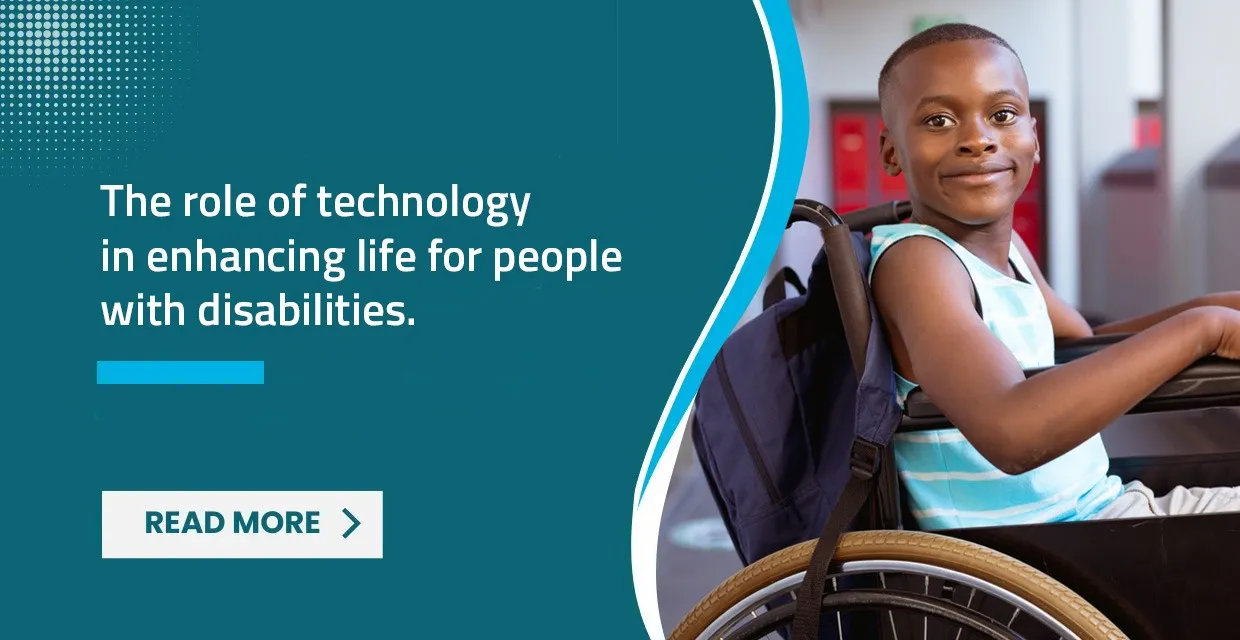The role of technology in enhancing life for people with disabilities has been transformative and continues to evolve rapidly. Technology not only provides tools for better accessibility and independence but also opens doors to new opportunities in education, employment, and social engagement. Here's an overview of how technology is making a significant difference:
Assistive Technologies
Mobility Aids: Electric wheelchairs and advanced prosthetics, often incorporating smart technology, have greatly increased mobility for those with physical disabilities.
Hearing Aids and Cochlear Implants: These devices have become more sophisticated, providing clearer sound and better quality of life for people with hearing impairments.
Visual Aid Technologies: Screen readers, text-to-speech software, and braille displays assist those with visual impairments in accessing digital content.
Communication Devices: Augmentative and alternative communication (AAC) devices help individuals with speech or language impairments to communicate effectively.
Digital Accessibility
Voice-Activated Systems: Smart home devices that respond to voice commands can help people with mobility or dexterity challenges to control their environment more easily.
Adaptive Keyboards and Input Devices: These are designed to assist individuals who have difficulty using standard keyboards and mice, enabling easier computer access.
Website Accessibility Tools: Features like screen readers, text enlargement, and high-contrast modes on websites make the internet more accessible to those with visual or cognitive disabilities.
Educational Technologies
E-Learning Tools: Adaptive learning software and online education platforms provide accessible education options for students with disabilities.
Interactive and Adaptive Learning Devices: These are designed to cater to the unique learning needs of children and adults with various disabilities.
Employment and Workplace Integration
Remote Working Technologies: Video conferencing and collaborative online platforms enable people with disabilities to work from home, offering greater flexibility and accessibility.
Workplace Adaptation Tools: Software and hardware adaptations, like ergonomic workstations, make the workplace more accessible.
Health Monitoring and Medical Technology
Wearable Health Devices: These can monitor vital signs and alert users and healthcare providers to potential health issues, offering independence and security.
Telemedicine and Online Healthcare Services: They provide easier access to healthcare for those with mobility challenges or those living in remote areas.
Social Inclusion and Recreation
Virtual Reality (VR) and Gaming: Adaptive gaming controllers and VR technologies offer inclusive recreational opportunities for people with disabilities.
Social Media and Communication Platforms: These platforms can be a lifeline for social interaction, especially for those who may be homebound or have limited mobility.
Future Developments
Artificial Intelligence (AI): AI is poised to offer even more personalized and adaptive assistance, from predicting needs to automating routine tasks.
Robotics: Developments in robotics hold promise for personal care assistance, further aiding independence for people with disabilities.
Brain-Computer Interfaces (BCIs): These emerging technologies could revolutionize how individuals with severe disabilities interact with the world.
In conclusion
Technology plays a pivotal role in enhancing the lives of people with disabilities by breaking down barriers and fostering an environment of inclusion and accessibility. The ongoing advancements in technology continue to promise even greater levels of independence, participation, and quality of life for individuals with disabilities.



